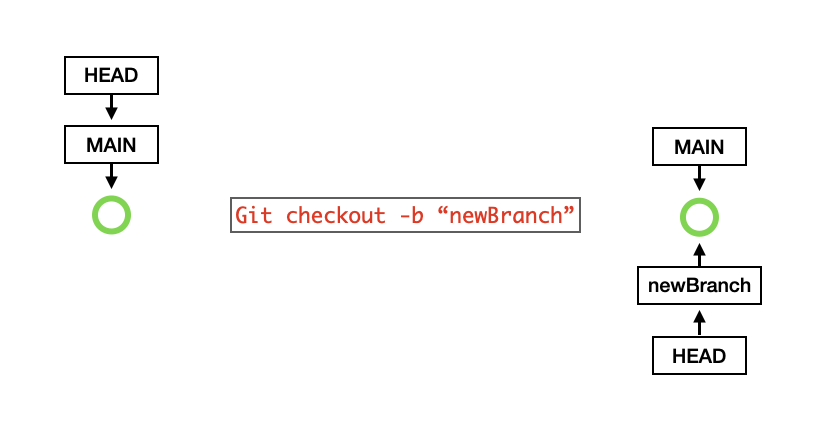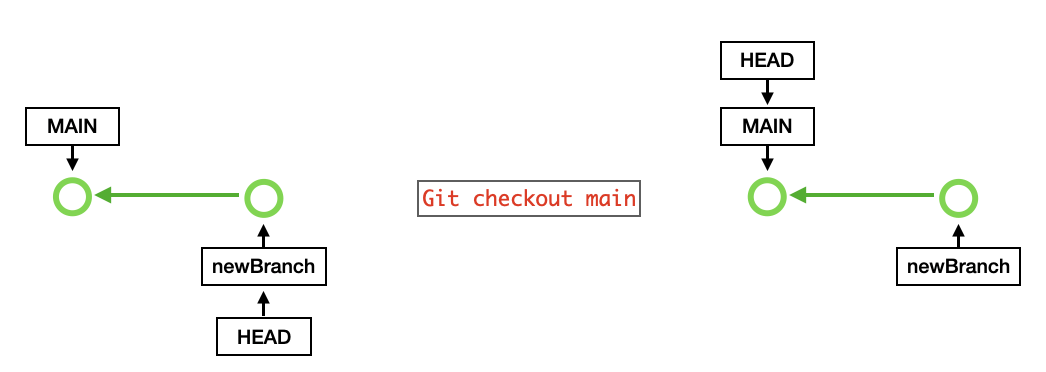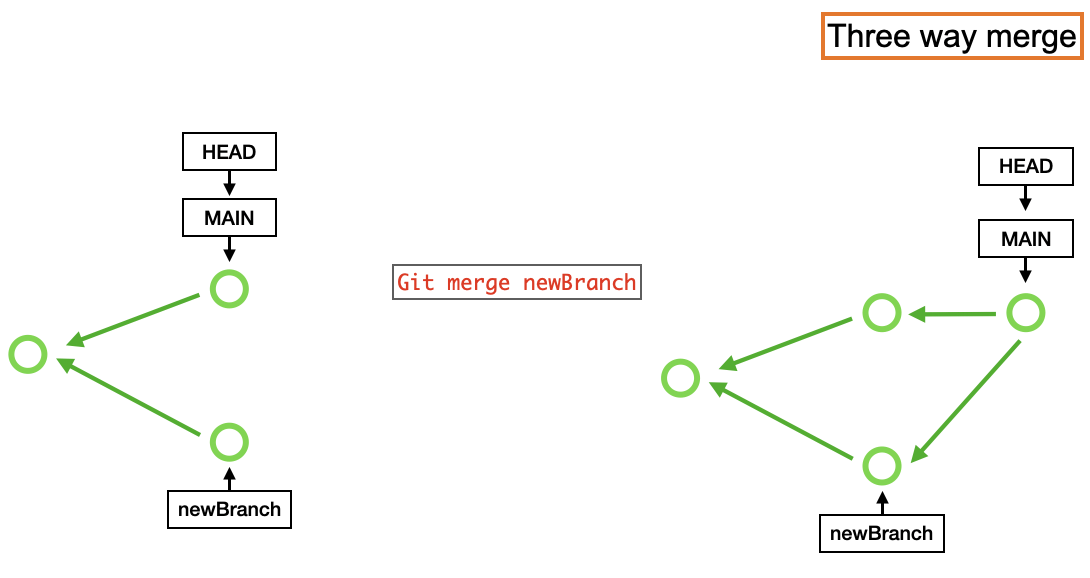Day 2 - Git Examples¶
Examples using commands we have learnt¶
To better illustrate how you could visualise basic git commands. We will be going through the 2 ways of merging but starting from scratch.

-
On our first commit, 1 snapshot in which the default branches
main / masterandHEADpoints to. Take notemain / masteris a default branch created andHEADis a pointer to show which branch you are currently on. -
We then use
git checkout -b "newBranch"to create a new branch named "newBranch" and also move theHEADpointer to that newly created branch. Do note that a branch is just a pointer to a commit, so creating a new branch just creates another pointer to the current commit you are on.

- After making some changes, we need to use
git add .to add all modified file from my current directory into the staging area. This is to tell git that the added files are to be tracked. After adding files we want to commit to the staging area, we usegit commit -m "1st change". This tells git to create a snapshot and store a meaningful commit message named "1st change". Git will then create the commit and then move the pointersnewBranchandHEADto the new commit you just created.

- Now to go back to the main branch, we use
git checkout mainto switch the HEAD pointer to the main branch.

- Now that we are on the main branch, we make more changes and do the same as previously mentioned to add modified files to the staging area then commit them with a meaningful message.

- Now we have 2 branches with 2 different feature sets / changes. We want to merge them together. Now we run
git merge newBranchto merge newBranch to the current branch HEAD is on which is main in this case. Git will then do a Three-way merge since there is no linear path of commits.

- To illustrate a fast forward commit, refer to the left of the image for an example of a linear path of commits. You will realise that newBranch2 is simply some form of modification of the main branch. Therefore, git does not need to create another snapshot like what it did previously, but it only needs to update the main pointer to point to the commit in which newBranch2 points to.